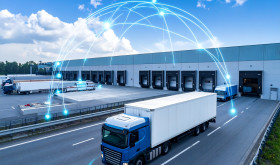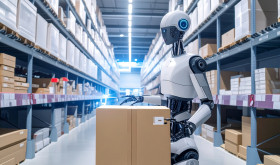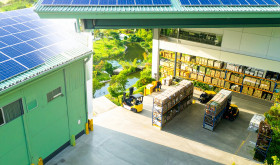
In 2025 global supply chains face huge pressure from geopolitical unrest, climate change, and fast-changing customer needs. These issues have shown big weak spots in logistics and order fulfilment making speed, accuracy, and flexibility more crucial than ever.
Order management systems have become key tools to tackle these problems, helping businesses streamline work, cut costs, and make customers happier. This article looks at how an order management system can solve urgent supply chain issues and shows the game-changing potential of new tech in this field.
Today’s Supply Chain Problems
The supply chain today runs into many roadblocks that affect how orders are managed:
- Geopolitical Instability: Conflicts and trade restrictions disrupt global supply routes, causing delays and inventory shortages.
- Climate Change: Extreme weather events disrupt logistics networks more often, leading to delayed shipments and higher transportation costs.
- Cybersecurity Risks: The increase in interconnected systems has made supply chains more open to cyberattacks, threatening data integrity and operational continuity.
- Customer Expectations: Customers now want faster deliveries, real-time tracking, and personalized shopping experiences.
These challenges require strong solutions that can adjust to disruptions while keeping operations smooth.
How Order Management Systems Address Supply Chain Problems
Modern OMS platforms aim to address these challenges through advanced features like automation, real-time visibility, and integration with other systems. Here’s how Order Management System tackles current supply chain issues:
- Centralised Order Processing
Order Management System brings together orders from various sales channels—online stores, physical retail locations, and third-party marketplaces—into one platform. This centralized approach has an influence on:
- Fewer Errors: Automation cuts down on manual data entry mistakes such as wrong shipping details or product choices.
- Streamlined Operations: Orders go to the nearest fulfilment centre based on set rules to cut delivery times and shipping costs.
- Real-Time Inventory Visibility
Supply chains often face issues with inventory discrepancies. The order management system gives up-to-the-minute stock updates across warehouses and stores using IoT devices and RFID tags. This has an impact on:
- Fewer Stockouts: Automatic systems order restocks when inventory drops below set levels.
- Better Inventory Placement: Smart systems put products close to where people want them most.
- Better Customer Experience
Customers now expect to see what’s happening with their orders at all times. Order management system makes customers happier by offering:
- Live Order Tracking: Customers can check their orders from start to finish, cutting down on calls to customer service.
- Personal Touch: Connected systems let businesses suggest items based on what customers have bought before and what they like.
- Sustainability Integration
More businesses and consumers now prioritize sustainability. OMS helps green efforts by:
- Making packaging more efficient to cut down on waste.
- Keeping tabs on carbon emissions tied to order fulfilment.
- Suggesting eco-friendly shipping options based on where items are going and how fast they need to get there.
- Cybersecurity Measures
Order management system platforms now include strong cybersecurity features to guard sensitive data from attacks. These involve encryption protocols, spotting threats as they happen, and following global rules for data protection.
New Tech in Order Management Systems
Cutting-edge technologies are shaping the future of order management systems set to transform supply chain operations:
- Artificial Intelligence (AI) and Machine Learning (ML)
AI-powered order management system platforms examine past data to forecast demand patterns, fine-tune stock levels, and streamline decision processes. Some examples include:
- Better demand predictions that cut down excess stock and shortages.
- Smart order routing that adapts to current conditions like traffic jams or bad weather.
- Blockchain for Transparency
Blockchain technology boosts transparency by creating unchangeable records of every deal in the supply chain. This ensures you can track goods from production to delivery while lowering the risk of fraud.
- Internet of Things (IoT)
IoT devices give up-to-the-minute info on stock levels, where shipments are, and the conditions during transit. For instance:
- Smart shelves update stock levels in the OMS when someone removes or adds items.
- Sensors in delivery trucks keep an eye on temperature for sensitive shipments like medicines or food that can spoil.
- Cloud-Based Solutions
Cloud-based order management system platforms give businesses the ability to grow and adapt by letting them access data from any location. These solutions also make it easy to connect with ERP (Enterprise Resource Planning), CRM (Customer Relationship Management), and TMS (Transportation Management Systems).
Case Study: Using Order Management System to Stay Strong
A big retail brand around the world ran into trouble during a political conflict that cut off access to key suppliers in 2024. By setting up an AI-powered order management system platform connected to IoT sensors across its warehouses:
- The company reached 98% inventory accuracy by tracking stock levels in real time across multiple sites.
- Automated order routing cut delivery times by 22% boosting customer happiness even with outside problems.
- Sustainability features helped the company cut packaging waste by 15% meeting rules and making its brand look better.
This example shows how strong Order Management System capabilities can turn tough challenges into chances to grow and bounce back.
Conclusion: Why Order Management System Matters in 2025
Order management systems are now essential tools to handle the complex issues in today’s supply chains. These systems have a central place to process orders, show what’s in stock, make customers happier, and include ways to be eco-friendly. This helps businesses deal with big problems like unstable world politics, weather issues from climate change online security risks, and what customers want now.
As new tech like AI, blockchain, IoT, and cloud computing gets better, OMS will have an even bigger impact on how supply chains work. Companies that put money into advanced order management systems now will be ready to handle future problems while staying productive, profitable, and customer-loyal.
In today’s fast-paced world, implementing a strong order management system isn’t just about upgrading operations—it’s a must-have strategy to thrive in the long run in a global market that’s always changing.










